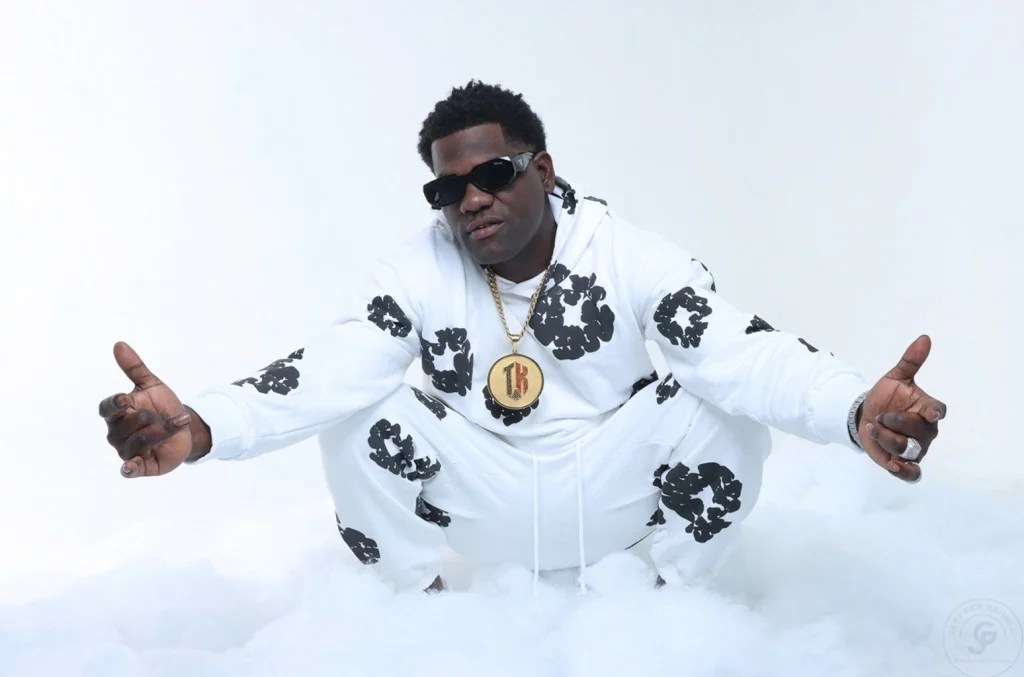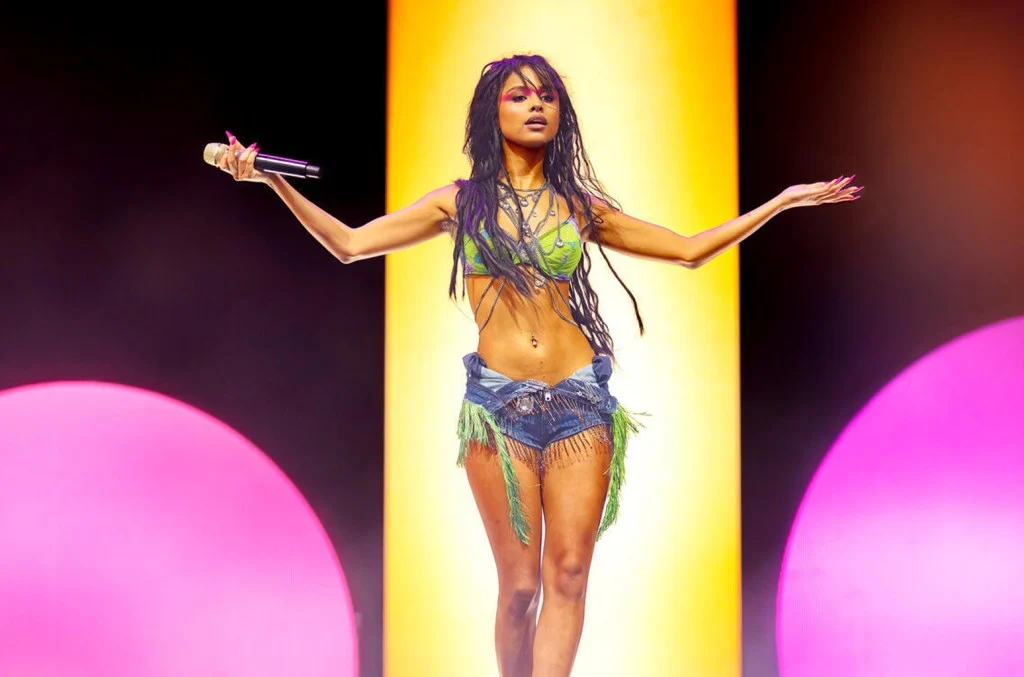Soca Star Trinidad Killa Talks Nicki Minaj ‘Eskimo’ Remix, Machel Montano Controversy & Caribbean Music Awards Nominations
Written by djfrosty on April 21, 2025

Some artists break through with their very first single; others go their entire careers unheard. Trinidad Killa, who’s been in the music industry for a quarter-century now, got his long-overdue break nine years ago, but a recent career-shifting collaboration with Billboard’s No. 1 Greatest Female Rapper of All Time sent an entirely new – and infinitely stronger – wave of momentum his way.
Hailing from Arima in Trinidad & Tobago and currently residing in Flatbush, Brooklyn, Killa has always followed wherever his creative inclinations led him. In the early-mid ‘10s, Killa frequently entered music competitions – from Soca Star and Digicel Rising Stars to more local street showdowns. In those clashes, Killa’s near-perfect victory streak earned him his nickname, and he continued honing those skills on Basilon Street, the area of the island that would give way to a popular subgenre of Trinbagonian dancehall called “zess.”
As one of the self-proclaimed pioneers of zess, Killa scored one of the style’s earliest hits with 2019’s “Gun Man in Yuh Hole,” which he’s since parlayed into his first three nominations at the Caribbean Music Awards. As exclusively revealed by Billboard, Killa earned nods for zess-steam artist of the year, best new soca artist and the soca impact award.
Trending on Billboard
Much of Killa’s recent motion has come off the back of “Eskimo,” a song that nearly disappeared into the ether after it was initially recorded in late 2024 over an unauthorized use of Full Blown’s “Big Links” riddim, which has spun out massive hits for Yung Bredda (“The Greatest Bend Over”), Machel Montano (“The Truth”) and Full Blown themselves (“Good Spirits”) this carnival season. Once Killa smartly (and quickly) cut “Eskimo” over a different riddim, he successfully shot his shot and secured Trinidadian-American rap icon Nicki Minaj for the remix, which lifted to song to No. 2 on World Digital Song Sales this spring (chart dated March 15).
“I always try to show people that music is a mission, not a competition,” Killa tells Billboard. “In order for soca music to reach where it’s supposed to reach, everybody must get a fair chance and a fair opportunity – and that’s what Nicki gave me.”
In a sprawling conversation with Billboard, Trinidad Killa breaks down how Nicki Minaj got on the “Eskimo” remix, his rocky relationship with the Trinbagonian music industry and the true origins of zess.
What are some of your earliest musical memories?
Trinidad Killa: I grew up going to church every Saturday with my mom and my brothers and sisters, just listening to the music and vibing. I’ve always loved music – from winning school competitions to chanting on the streets. I remember when I was in Soca Star back home in Trinidad and Tobago, and I came in seventh place. That was my first competition, and Digicel Rising Stars came after.
Where were you when you found out about your Caribbean Music Awards nominations?
I was at home, and somebody sent me a message on Instagram saying that they voted for me. I does be so busy that I ain’t really paying attention to social media. When I saw that in my inbox, I went to the [website] and saw I was really nominated in three categories. I’m one of the people who created zess music, so I feel very good within myself knowing that something I helped create is being recognized by the Caribbean Music Awards today.
What do you love most about zess?
People back home in Trinidad & Tobago give zess a bad [name], but zess is about enjoying yourself. I want to get that clear, because [some] people feel zess is about men doing the wrong things. The word “zess” comes from a spot where we used to party back in Trinidad & Tobago named Basilon Street. People would come on Friday and catch themselves still there on Tuesday and Wednesday with the party still going on. Everybody would say, “We goin’ down in the zess” because when you pulled up, that’s where the party was happening. Down in the zess, you have plenty men with big chains, men smoking weed and drinking and just having a good time. Zess is a form of enjoyment.
How do you assess the 2025 soca scene?
Back home, I is a real ground man. I built myself up from the ground, and there’s plenty [people trying to] fight me down in the music industry because I is a real talented person. In the music industry in Trinidad and Tobago, it’s about who knows who. So, I decided to leave and come to America and ended up doing a soca song this year on Full Blown’s “Big Links” riddim. When I first heard the riddim, I thought it was real bad and I wanted to be on it; I reached out to the producers and let them know that.
I am so feared in the music industry in Trinidad and Tobago that they don’t want my music to go through the right channels, so they was denying me the rights to [record] on the riddim. That riddim used samples from my song, “Gun Man in Yuh Hole,” so I feel like I had a part to play in that whole thing. It’s only right that if you use something to create something new, you should bring those [original] creators along. They used [our] thing to make something else and then put other artists on it.
How did Nicki Minaj end up on “Eskimo?”
I decided to jump on the riddim and pen a song, because I was in New York and couldn’t go back home for Carnival. I was going through so much in my career — they weren’t playing my music on the radio, and I was just fed up. I didn’t come to America with a visa, so being here and knowing I couldn’t go back home was very depressing. My producer and I [channeled those feelings] into a new tune, and that’s how we came up with “Eskimo.”
When we put out “Eskimo,” it was getting so much traction that they ended up pulling down the track [due to its unauthorized use of the “Big Links” riddim] – even after it hit 100,000 views in [two days]. That was very heartbreaking. I sat and prayed on it and decided to build a different riddim and put “Eskimo” over it. The day we were going to put out the new version [on the “Bigger Links” riddim], Nicki Minaj hit me up and said, “Nice track, [this is] wonderful.” So, I went into her inbox and asked her to be a part of the track, and we ended up putting it out together. That was one of the biggest achievements in my entire career.
What was your reaction when you saw “Eskimo” hit No. 2 on Billboard’s World Digital Song Sales chart?
I was speechless. Everything I put my mind to as a yute, I achieved it – from entertaining to owning a restaurant to coming to America. I had to pinch myself because I felt like I was still dreaming.
What exactly did Machel Montana mean when he asked you and Nicki to “stop fighting him down?”
Me and all entertainers in Trinidad are good. I was young, mashing up the stage with Machel and them at the age of 16-17 – and these fellows never really gave me an opportunity or a stage-front. Really and truly, Machel and them just want everything in the music industry. They want to be the face of soca, and that is why I fight for other artists and for the common yutes to get an opportunity.
I was the first man to even put Yung Bredda in the studio, and gave him his first hit song. Lady Lava, all of them, I have history behind me. When I get blessed, I always like to bless somebody else — that’s how I will continue reaching different heights. When Machel saw I did a song with Nicki Minaj, he felt a type of way, knowing that he is the King of Soca and he never took an opportunity to give me that platform, [despite] knowing that I’m a good artist. And Nicki came and did it! While on stage, in the hype of the moment, he said something he wanted to say all this time — but he thought nobody would pick up on it.
Have you met Nicki yet? Has she given you any advice as you navigated this next stage of your career?
I haven’t met her yet, but soon. She always tells me to stay focused and gives me positive [affirmations] for my daily life and career. Everybody looks up to Nicki; to have a collaboration with the queen of rap music is a huge accomplishment [for] me.
When did you decide to start going by Trinidad Killa and why?
They used to call me “Killa” because I was involved in plenty song clash. 99% of the time, I won those competitions, so [I got the name]. When I got my first hit in the industry, I tried to change my name 20 times, but “Killa” stuck. I [decided] to put “Trinidad” in front of the “Killa” because that’s what people know me as, especially because there’s already Bounty Killer, Mr. Killa, etc. I also put the “Trinidad” in front so when people hear “Killa,” they don’t feel like it’s anything negative.
“Gun Man in Yuh Hole” or “Good Hole?”
I was in the venue freestyling “Gun Man in Yuh Hole,” and somebody uploaded it online and it went viral on social media. Someone took the vocals from that clip and put it on a riddim, and that’s how I got my break in the industry. I never went to a studio to record “Gun Man in Yuh Hole,” so it will always be one of my favorite tunes. That’s a foundational tune. It brought me to BBC 1Xtra and around the whole Caribbean.
When can we expect your next album?
I hope I finish in time, but I want to put out the album the same night as my next show on May 24. I’m not just a soca artist, I have reggae, dancehall and Afrobeats tracks. But I love soca, that’s my culture, and that’s where I come from.
Where is the oddest place you’ve heard one of your songs?
Dubai. Someone tagged me in a post, and in a club in Dubai – a real rich party – people were dancing to “Gun Man in Yuh Hole.”
Who’s the greatest rapper of all time?
Nicki Minaj.
What’s your favorite meal?
I’m a cook as well, so I cook for myself. I had a restaurant, but I had to ease off and focus on the music when I came to America. I used to sell [food] on [Eastern] Parkway, and we would have people lining up by the hundreds. In Trinidad, I had a big restaurant, and I cooked anything – you name it, and I make it.
What do you hope to achieve by the end of 2025?
Getting my own restaurant in New York City.

 State Champ Radio
State Champ Radio 





